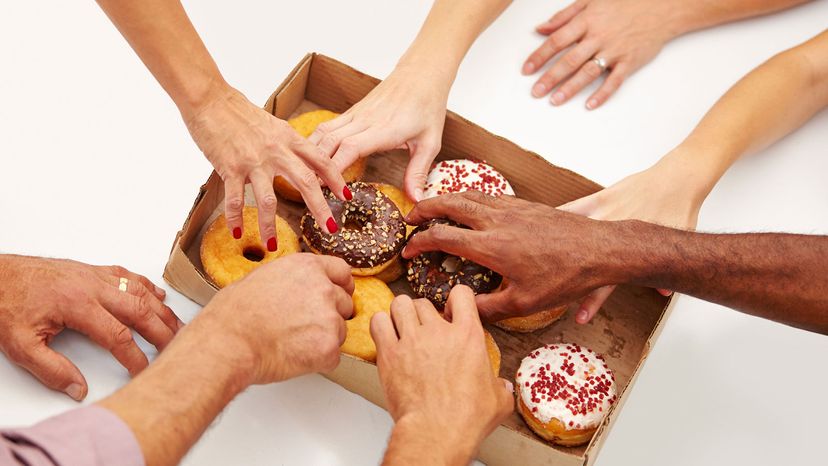 “All those extra calories consumed at work can really add up. Yuri_Arcurs/Getty Images
“All those extra calories consumed at work can really add up. Yuri_Arcurs/Getty Images
The next time you’re tipping the office breakroom’s vending machine in hopes of shaking loose that snagged candy bar, perhaps you should take it as an omen. A recent study shows that millions of American workers are scarfing down lots of extra calories on the job — and it may very well be taking a toll on their health.
How many extra calories? Try 1,292 in a week. That’s about the same as two Whoppers from Burger King. Or almost your entire daily calorie allotment if you’re trying to lose weight.
The study, conducted by the U.S. Centers for Disease Control and Prevention (CDC), showed that at least once per week, roughly 25 percent of working adults are grabbing extra food at work, either from a vending machine or for free during a meeting or onsite social event. And most of those snacks weren’t broccoli or carrots, either. The study found that the leading foods were high-fat, high-sugar wonders like pizza, regular soft drinks, cookies/brownies, cakes and candy, the kind of foods that can lead to obesity if consumed in large quantities over time. The report was published in the Journal of the Academy of Nutrition and Dietetics on Jan. 22, 2019 and didn’t include food brought from home or bought from a restaurant/food outlet to eat for lunch.
CDC researchers leaned on a 2012-13 survey of 5,222 employed adults who were asked about their food purchases and acquisitions during a seven-day period. The data was gathered via the Food Acquisition and Purchasing Survey (FoodAPS), so it’s representative of workers from all over the U.S.
What’s at stake? Well, with obesity comes soaring rates of cancer, diabetes and of course, heart disease, the No. 1 killer of both men and women in America.
Lead CDC investigator Stephen J. Onufrak notes that simple measures can overhaul this trend. "Employers can offer appealing and healthy options in cafeterias, vending machines, and at meetings and social events," he says in a press release. "One way to do this is by incorporating food service guidelines and healthy meeting policies into worksite wellness efforts." The study authors also write that tempting, but unhealthy, snacks could also be placed "out of view" or offered in smaller serving sizes.
Now That’s Interesting
The study found that college-educated workers had far more access to free food at work than employees with just a high school diploma (21 percent versus 14 percent).


